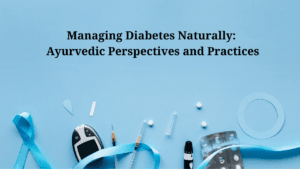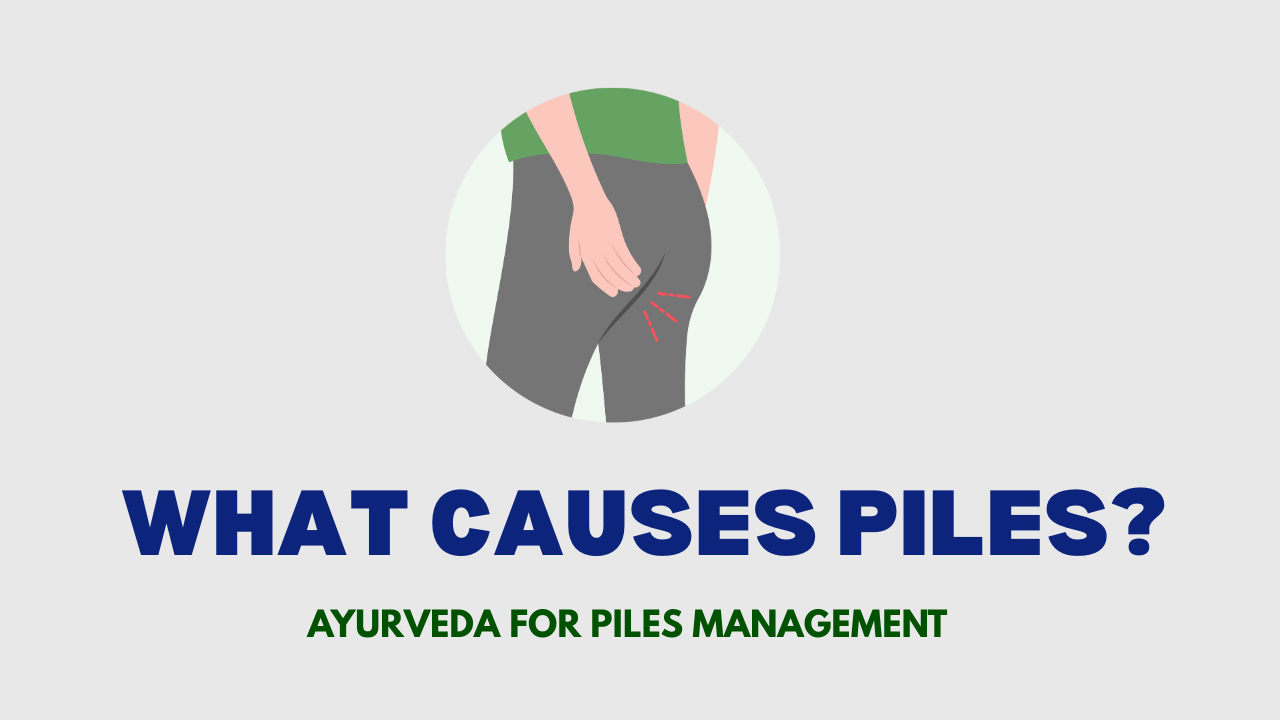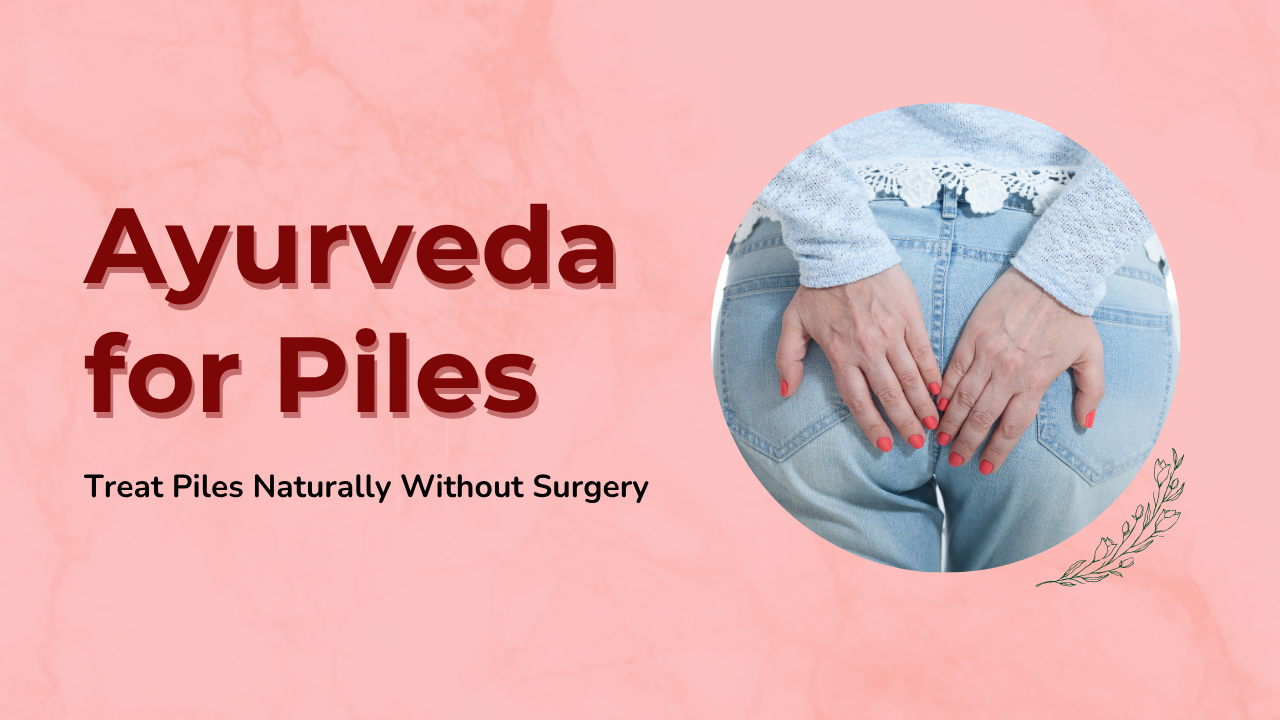🏷️15% Off on Rasayan Amrit🆓Free Shipping on all Orders🏷️10% Off on Prepaid Orders
Yoga Poses That Support Circulation & Reduce Piles Discomfort
Table of Contents
ToggleIf you’re looking for ways to ease discomfort from piles (haemorrhoids) and support better circulation in the lower body, yoga offers a gentle and effective route. By choosing the right poses and combining them with lifestyle habits, you can help improve blood flow, reduce pelvic-vein pressure and support healthier bowel function.
Why Yoga Helps with Circulation & Piles Discomfort
- Piles often stem from increased pressure in the anal/rectal veins, straining during bowel movements, poor circulation or prolonged sitting.
- Yoga poses that elevate the legs, twist the torso, open the hips or invert the body help improve venous return and reduce pooling in pelvic‐lower-body veins.
- Yoga also supports digestion and bowel regularity (a key factor in piles) by stretching the abdomen, reducing constipation and improving core/pelvic strength.
- Combining movement with mindful breathing and relaxation helps decrease stress, which in turn supports healthier digestion and circulation.
Key Yoga Poses for Circulation & Piles Relief
Here are some of the most helpful poses. Modify as needed, move slowly and avoid any sharp pain or discomfort.
► Viparita Karani (Legs-Up-the-Wall Pose)
How to: Sit sideways against a wall, swing your legs up so they rest vertically and your body lies on the floor. Arms by your sides, relax. Hold 5-10 minutes.
Benefit: Elevates legs, helps venous return from lower body, reduces pelvic congestion.
► Malasana (Garland / Deep Squat Pose)
How to: Feet wider than hip-width, toes slightly outward. Squat down keeping heels on floor if possible, palms together pressing elbows into knees, spine upright. Hold ~30-60 seconds.
Benefit: Opens hips, strengthens pelvic floor, improves circulation around the groin/anal area and supports smoother bowel movement.
► Pavanmuktasana (Wind-Relieving Pose)
How to: Lie on back, extend legs. Bend one knee towards chest, hold with both hands around shin or knee. Hold 20-30 seconds each leg, then optionally both.
Benefit: Relieves gas/bloating, relaxes lower back and pelvic floor muscles, supports digestion and reduces straining
► Ardha Matsyendrasana (Half Spinal Twist)
How to: Sit with legs extended, bend one knee and place your foot outside the opposite thigh. Inhale, lengthen spine; exhale twist toward bent-knee side, hold ~30 seconds, then switch.
Benefit: Stimulates abdominal organs, improves digestion, increases circulation in abdomen/pelvis
► Setu Bandhasana (Bridge Pose)
How to: Lie on back, knees bent, feet flat hip-width apart. Press into feet, lift hips toward ceiling, thighs parallel, hold 20-30 seconds, lower slowly.
Benefit: Strengthens glutes & lower back, supports pelvic muscles, improves lower-body circulation, reduces anal-region strain.
Sample Routine (20-30 Minutes)
- Warm-up: Cat-Cow, gentle hip circles (2-3 minutes)
- Malasana: 30-60 seconds
- Pavanmuktasana: 20-30 seconds each leg
- Setu Bandhasana: 2 rounds of 20-30 seconds
- Ardha Matsyendrasana: 30 seconds each side
- Viparita Karani: 5-10 minutes
- Cool-down: Deep breathing for 2-3 minutes
Tips:
- Practice on an empty stomach or 2-3 hours after a meal.
- Use a wall, bolster or blanket for support.
- Move gently,no force, no sharp pressure.
- If you have an active flare-up (bleeding, prolapse), consult a doctor before doing inversions or intense poses.
Final Thoughts
Yoga can be a powerful complementary tool in easing piles discomfort and improving circulation in the lower body and pelvic region. When performed regularly and combined with supportive lifestyle habits (diet, hydration, movement), you’ll likely experience reduced swelling, less pressure and smoother bowel movements.
Remember: yoga helps support relief, it is not a substitute for medical evaluation if you have severe symptoms. Stay consistent, listen to your body, and let movement + mindfulness do their work. Over time, the cumulative effect of better circulation, stronger pelvic muscles and improved digestion can make a significant difference.
Relieve piles discomfort naturally- try PILESNIB today for soothing relief from swelling, pain and pressure. Feel the difference and regain comfort.
FAQs
Q1: Can yoga cure piles completely?
No. Yoga supports symptom relief, circulation and pelvic health, but it’s not a standalone cure. If you have severe piles, bleeding or prolapse, you should consult a healthcare provider.
Q2: How many times a week should I practice?
Aim for 3–5 sessions per week. Even shorter daily routines (10-15 minutes) can help if consistent.
Q3: Which poses should I avoid during a flare-up?
Avoid deep inversions or heavy pressure on the anal/pelvic region if you have bleeding or severe swelling. Always modify, use support, and stop if it hurts.
Q4: When can I expect relief?
Relief timelines vary. Some people notice improvements in days; for others, it may take several weeks combined with lifestyle changes.
Q5: What lifestyle habits should I combine with yoga?
Focus on:
- High-fibre diet + adequate water to soften stool
- Avoiding prolonged sitting and move regularly
- Responding promptly to bowel urges (don’t delay)
- Healthy weight and avoiding excessive abdominal pressure











Comments are closed